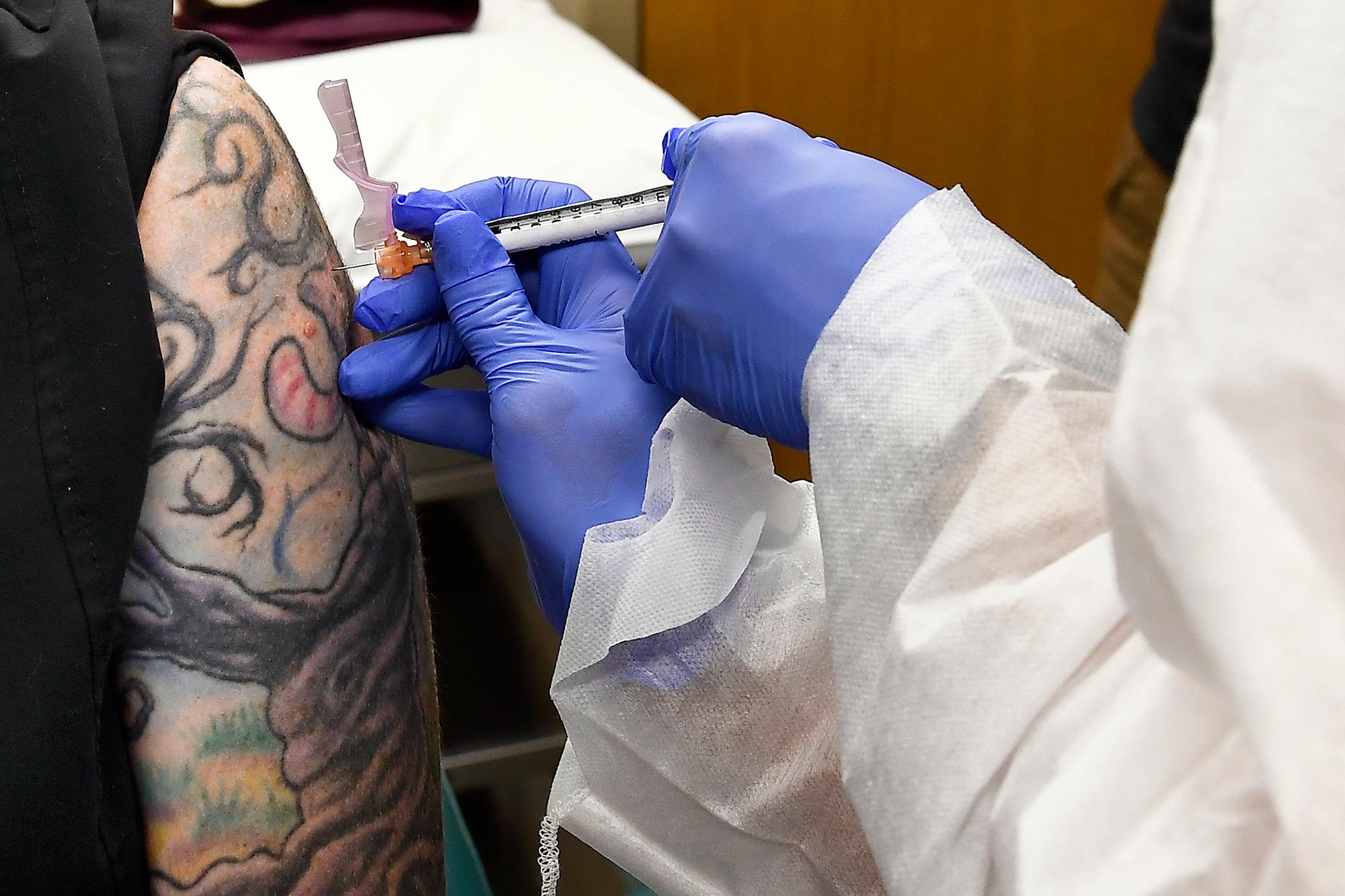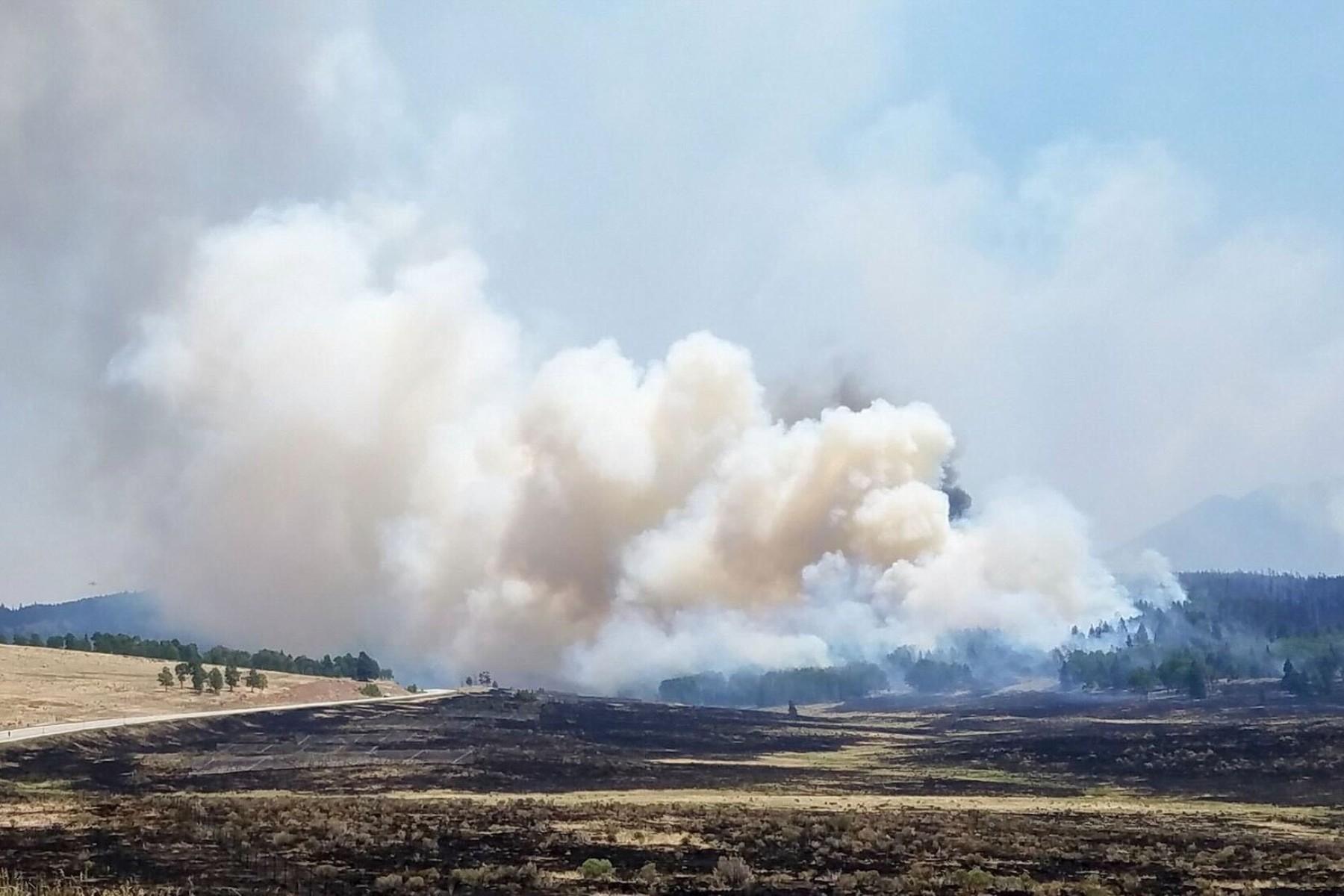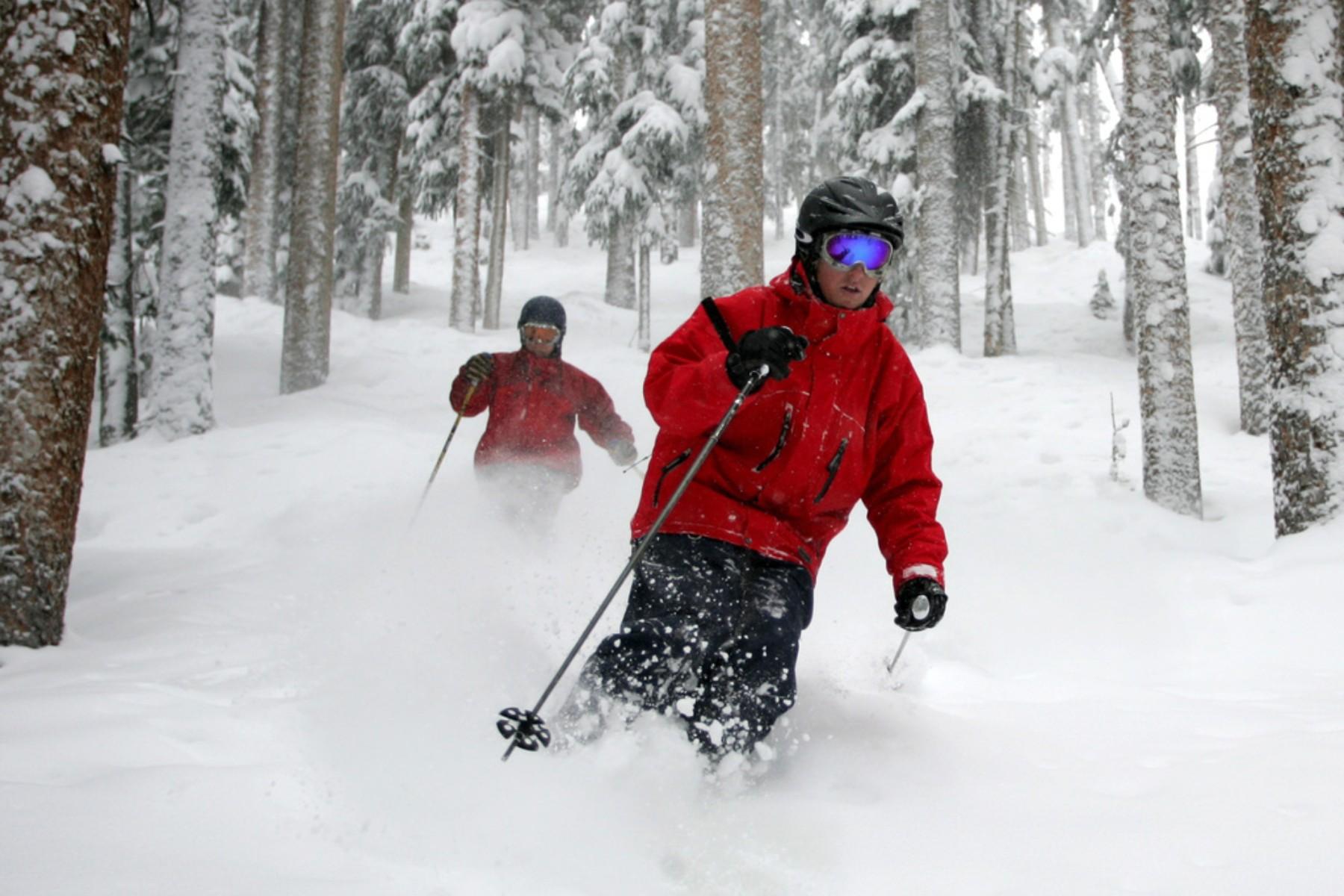
When the first planeload of COVID-19 vaccine arrives soon at Denver International Airport, it will be tightly packed in dry ice. It will be carefully unloaded and placed with delivery drivers, and they will be charged with taking it into what looks like, at least for now, an uncertain future.
As the vaccine nears distribution, as soon as a week or two from now, much work remains to be done in Colorado. For starters, the exact order of who will get it first has not yet been set. The facilities and people who will be giving the injections are also unsettled.
“Unfortunately the plan is still in progress, and that is a concern,” said Mark Johnson, president-elect of Colorado Medical Society and the interim director of Jefferson County Public Health.
Despite that uncertainty though, local public health directors feel confident the state can handle what will be the largest vaccination effort in modern times.
“We'll use every aspect of our health care delivery system to make this successful,” said Joni Reynolds, the public health director in Gunnison County who serves on the state vaccine planning team, as well as a longtime veteran of public health in Colorado. “We'll see primary care docs involved, health care systems, large hospitals, small hospitals, pharmacies, public health, all kinds of efforts will be made to provide the vaccine in different settings.”
The vaccine planning is happening amidst an epic third wave of cases in the U.S. and Colorado, where the percentage of tests coming back positive, averaged over a week, has risen for three days, even before data comes in from post-Thanksgiving testing.
But hope has come in the form of promising data from Moderna and Pfizer that show their vaccines are more than 90 percent effective against COVID-19. Forty million doses could be available within weeks if the Food and Drug Administration grants emergency use authorization.
“Help is in fact on the way,” said Dr. Anthony Fauci, director of the National Institute of Allergy and Infectious Diseases, who joined Colorado Gov. Jared Polis for a Tuesday press conference. “Vaccines are literally on the threshold for us.”
Fauci said that the top priority groups will likely get the vaccine through the end of December to March, and by April the vaccine will be available for everyone who wants it.
“Once we get there, we can crush this outbreak just the way we did with smallpox, with polio and with measles. So we can do it,” said Fauci.
Most attention lately has focused on who will get the vaccine first, as doses will be limited. Everyone will need two doses, so those 40 million initial doses, if they materialize, will be enough to vaccinate 20 million adults.
A committee with the Centers for Disease Control and Prevention voted on Tuesday to expand the first group to include nursing homes, where deaths have been highest. While the CDC’s recommendation isn’t binding, many states are expected to follow it.
Health care and assisted living workers get the vaccine first in Colorado's proposed plan
Colorado’s vaccination plan, submitted to CDC in October, laid out which groups will get the initial doses, but left plenty of room for interpretation. Colorado's plan doesn’t mesh perfectly with the CDC’s guidelines, which Polis said would undergo a “tweak” to meet Colorado’s needs. That likely won’t be done until next week, as the first doses near our state’s doorstep.
But if it stays largely as now drafted, the first phase of vaccine distribution will go to hospital and assisted living facility workers first, followed by emergency medical workers, firefighters and correctional workers. Then nursing home residents.
That’s 331,533 people in the first phase in Colorado, as estimated by the Colorado Department of Public Health and Environment.
Assuming both vaccines get approval and distribution to states begins weekly based on adult populations, Colorado could be in line for enough vaccine by the end of December or early January to vaccinate more than 300,000 people, which could be enough to inoculate the entire Phase 1 group.
One large group of people left off the initial three phases of the vaccination: children. Pregnant women are also excluded. CDPHE’s vaccine planning document says that’s because vaccine trials have not yet taken place for those populations, and so safety hasn’t yet been determined.
The goal is to get enough adults inoculated to provide “herd immunity,” limiting the number of hosts for the virus so that it runs out of places to go.
But first will be an effort to protect the people who take care of the sick and the most vulnerable Coloradans. And even within a group of health care workers there will be prioritization.
“For example,” reads the state’s plan, “radiologists who participate in patient exams would receive higher priority but those whose sole responsibility is reading films without patient contact might not receive higher priority.”
“The final decision as to which personnel are at high-risk will fall onto individual facilities.”
That leaves a lot of room for interpretation in the hospitals, public health departments, pharmacies and doctors offices where the injections are given. What safeguards are in place to prevent the politically connected, wealthy or athletically gifted from cutting the line?
CDPHE’s vaccination plan does say that VIP status shouldn’t govern who gets or doesn’t get the vaccine, but it’s not known how that will be enforced. The plan doesn’t say and CDPHE didn’t respond Wednesday to questions from CPR News.
Who could come next after Phase 1?
Following critical health care and frontline workers in Colorado’s current plan, is a second, broader phase, including people in congregate housing: homeless in shelters, incarcerated adults, even ski industry workers. Also in the second phase are essential workers in grocery stores and schools and child care. That’s about 670,000 people, by the state’s math.
Despite the state’s plan calling for vaccinating prisoners, Polis signaled on Tuesday that vaccines should not go to incarcerated people, other than vulnerable populations in prisons, before the free population.
Complicating matters further, Johnson said, there is a vocal anti-vaxxer population in Colorado, and many more people are also vaccine-hesitant.
“There's still some questions as to how many people are going to actually volunteer to get it. There's also some questions as to whether some health care systems are going to mandate that folks get it, all that is sort of still up in the air,” Johnson said.
And a hospital cannot simply vaccinate the entire staff all at once. There are minor side effects to the vaccines, including fever, which could knock out a certain portion of the workforce.
“I would probably advise hospitals to stagger the immunization,” Johnson said. “So you're not giving it to everybody at once, but you're staggered every three to four days or so. So that those short term side effects are over by the time you send the next cohort through.”
For the rest of the population, it’s not known when there will be enough vaccine for wider distribution. Fauci said likely as early as April, and by late summer, “you very likely could have overwhelming majority of the people vaccinated,” Fauci said. “Which means you'd have herd immunity.”
The state’s vaccine plan says a full-scale tabletop exercise could take place in the summer to prepare for mass vaccination.
How the state will (try to) ensure equal access to the vaccine
The state has also highlighted that the vaccine must be introduced equitably.
“Efforts will be made to ensure providers are enrolled in areas of the state where equitable access to vaccines may be lacking,” reads the state’s vaccine report.
Where those providers don’t exist CDPHE will work with local public health to ensure access, though it is unknown whether the public will be able to see statistics on the demographics of who is getting vaccinated.
CDPHE will also hire “cultural navigators” as consultants in setting up vaccine clinics, according to its vaccine plan. “e.g., is there a culture that prefers same-gendered professionals to administer the shots, are there cultures that may have questions about religious practices and vaccines, etc.
CDPHE will use its existing vaccine reporting database, the Colorado Immunization Information System, to keep track of vaccinations. The state reported that the system was upgraded after H1N1 with additional functionality, and over 2,600 clinic locations can report data into the system now.
A critical component will be messaging, which everyone from public health to health care providers will share in. What’s particularly tricky about these early vaccines is that they require two doses separated by about a month. It’s hard enough to get vaccines out to people when it only requires one dose.
“There are plans and there are materials already developed for both vaccine reminders, as well as systems to be able to send out automated responses,” Reynolds said. “And the state’s looking at setting up a call center, so folks can call in and get questions answered.”
This is where smaller medical practices say they can be of help. If family doctors, who have close relationships with patients, can also administer the vaccine, they can prod patients to come in and get the second dose, said Dr. Fred Grover, board-certified family physician in Denver.
“And I can say, ‘Hey, Dave, you know, you're a little late getting the booster, this is Dr. Grover. I want you to come back and do it,’” Grover said. “So I think the compliance and the tracking being done on a decentralized smaller practice level is going to be a hell of a lot better than doing it through some large system, whether it's at a pharmacy or a large hospital institution.”
Grover, who said he participated as a patient in the Moderna vaccine trial, is pretty sure he didn’t get a placebo dose. He says he felt fatigued, but managed the symptoms with over the counter medicines.
“It's worth the pain to prevent the maim,” he said, "the maim" being COVID-19.
Grover noted that it would be harder for him to administer the Pfizer vaccine though, because it requires ultra-cold storage, -75 degrees Celsius, a level unheard of in public health circles.
Still, if Pfizer’s vaccine is what Colorado gets, the state said they are ready and have purchased 10 ultra-low temperature freezers.
“CDPHE, in close collaboration with local public health agencies across the state, has identified 16 locations with ultra-low temperature freezers that could receive the first shipment of an ultra-cold vaccine, once one becomes available.”
Like with any kind of package, shipping snafus can happen
Phase 1 locations for initial shipments of a vaccine were scheduled to be finalized on Monday. CDPHE won’t reveal precise locations for security reasons.
Some of the ultra-cold infrastructure challenges have been carefully considered by the vaccine manufacturers.
“It'll be shipped in vaccine storage containers that actually can hold the vaccine on the dry ice that it shipped with for a number of days,” said Reynolds, the public health director in Gunnison. “And in addition to that, they're sending a replacement for dry ice for those shipments, so that it can be extended beyond the initial dry ice, and then it can also be stored in the refrigerator for a period of a few days before it's administered.”
Test runs for shipment have already occurred in Colorado, though not entirely successfully.
On Nov. 25, CDPHE reported in a press release that the state successfully completed a “vaccine readiness test.” But a week later CDPHE reported that while it received the first part of the shipment, it didn’t receive a second kit, with vaccination supplies.
“Tracking information confirmed that the ancillary kit designated for Colorado was sent and delivered to another state,” reads a follow-up press release from CDPHE on Tuesday. “This error in shipment was due to a label printing error with the manufacturer.”
Local public health directors have expressed concern too about the extraordinary cost of rolling out the vaccine. Federal CARES Act money is running out, and public health departments are stretched thin as it is. It’s not certain that Congress will pass a significant aid package in time, or if Colorado alone has the resources to prop up local public health to administer the vaccine.
Back in 2009, during H1N1, the last time the state had mass vaccination, Tri-County Public Health, which serves Douglas, Arapahoe and Adams counties, was strained of every available resource.
“Given the complexity of this endeavor,” reads a summary of the distribution in a 2010 public health brief from Tri-County. “Significant TCHD staff support was needed and received. Almost all TCHD employees served in some capacity in response to the novel influenza A (H1N1) pandemic…”
Tri-County, the state’s largest local public health agency also relied on hundreds of volunteers according to the report.
This difference this time is the private sector will take on a larger role in the distribution. CDPHE’s vaccine website says “more than 1,200 facilities in Colorado have expressed interest in being a COVID-19 vaccine provider when a vaccine becomes available.”
Pharmacies, hospitals and health care systems will be involved in a way that they were not for H1N1.
“And so we have a whole new group of experts who can help us with both marketing and with the delivery,” said Johnson, with the Colorado Medical Society and Jefferson County Public Health.
But there is still so much uncertainty. Colorado is not sure which vaccine it will get and how much there will be, among many other unknowns.
“We don't know how safe it is for children. We don't know how long immunity will last,” said Johnson. He added that the vaccine protects people from the disease, particularly the severe disease, “but we don't know yet whether it stops transmission. We don't know whether you can still have the virus and transmit it, even though you don't get sick from it. So there's a lot of stuff that still needs to be determined.”









